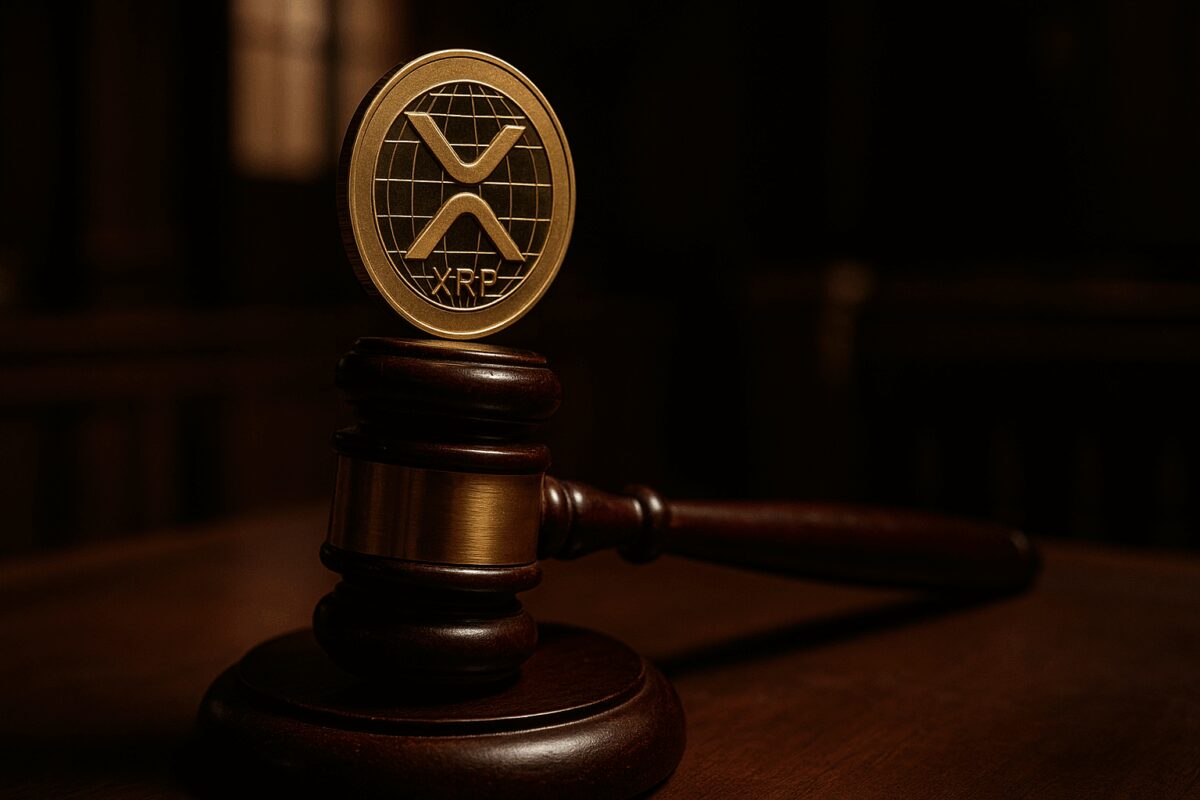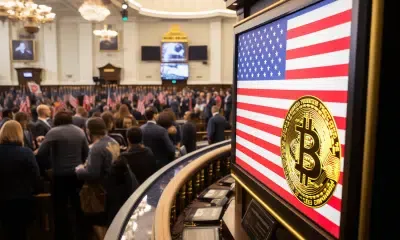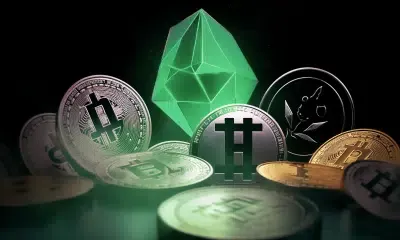
XRP’s Rollercoaster Ride: Decoding the SEC Showdown and What’s on the Horizon
The crypto world watched, often with bated breath, as the years-long drama over XRP’s security label unfolded. Ripple Labs found itself in the crosshairs of the U.S. Securities and Exchange Commission (SEC) starting December 2020. At the center of it all was a pivotal legal question: is XRP a security under U.S. law?
Agency officials claimed Ripple, along with leaders Brad Garlinghouse and Chris Larsen, illegally sold XRP as an unregistered security, pulling in upwards of $1.3 billion. Ripple’s defense always painted XRP as a payment-focused digital coin, distinct from any investment agreement.
Far more than just Ripple’s or XRP’s fate hung in the balance; the entire U.S. digital asset space felt the tremors from this courtroom clash. Everything boiled down to the Howey Test, an old Supreme Court benchmark from 1946, which decides if something’s sold as an “investment contract” and, by extension, a security.
The SEC’s Close Look: Howey’s Yardstick and Ripple’s Past Moves
To the SEC, Ripple’s handling of XRP, especially during early releases and company-led sales, clearly ticked all Howey Test boxes: people invested cash, pooled into a shared venture, hoping for returns generated by Ripple Labs’ own endeavors. Federal investigators dug deep into Ripple’s past advertising, what its leaders said publicly, and all the work poured into building up XRP’s world. From the SEC’s viewpoint, Ripple deliberately undertook these actions to boost XRP’s appeal and price, naturally making buyers anticipate gains from what Ripple was doing.
A Real Turning Point: Judge Torres’s Game-Changing Ruling
July 13, 2023, marked a major shift after U.S. District Judge Analisa Torres issued her summary judgment. Her decision drew some very important lines: XRP itself wasn’t automatically a security. The judge instead looked closely at how XRP was sold, creating different categories:
- Big Player Sales: When Ripple sold about $728 million in XRP directly to institutional investors, Judge Torres labeled these as unregistered security deals. She figured these savvy investors clearly expected Ripple’s work to make them a profit.
- Everyday Exchange Sales: Ripple scored a major victory with “programmatic sales”—XRP sold on public crypto exchanges. The judge decided these weren’t security transactions because everyday buyers on these platforms, using anonymous order books, didn’t necessarily know they were buying from Ripple or counting on its specific actions for gains like the institutions were.
- Other Handouts: XRP given out for employee pay or to support developers also dodged the security label, mainly because no one “invested money” to get them.
Crypto enthusiasts largely cheered this detailed ruling, prompting several American exchanges to bring XRP back and its price to jump.
The Story Unfolds: Appeals, Settlement Buzz, and a Changing Scene
But the courtroom story wasn’t finished. Initially, both government lawyers and Ripple’s team signaled they’d challenge parts of Judge Torres’s decision. The SEC wanted another look at the programmatic sales verdict, and Ripple pushed back on the institutional sales part. Yet, the plot thickened over late 2024 and into early 2025. Whispers grew louder about the SEC possibly softening its position, with talks of a settlement in the air. By early May 2025, some insiders claimed a deal was struck: Ripple would pay $50 million, way down from the court’s original $125 million fine. That rumored agreement supposedly also involved the SEC giving up its challenge to the programmatic sales win for Ripple.
Then came another curveball: on May 15, 2025, Judge Torres apparently rejected a mutual SEC-Ripple plea to greenlight the smaller penalty. She pointed to problems with court authority since appeals were technically still active, and said they didn’t file the request the right way for adjusting a final judgment. Even with this hiccup, Ripple’s top lawyer, Stuart Alderoty, along with other legal minds, hinted the core deal to end the lawsuit was still alive; they just needed to submit the paperwork properly. So, although a judge’s final signature isn’t on paper yet, things seem to be inching toward a wrap-up.
The Heart of the Matter: Ripple’s Stand Versus the SEC’s Accusations
From start to finish, each side pretty much stuck to their guns:
- The SEC’s Angle: Government lawyers consistently saw XRP, in how Ripple sold and distributed it, as an investment contract. Their core belief was that Ripple used XRP sales to fund its business, with buyers reasonably expecting Ripple’s efforts to grow the XRP ecosystem, make it more useful, and lift its price to bring them profits. Protecting investors through the disclosures that securities registration demands remained a key focus for the agency.
- Ripple’s Counter: Ripple, throughout, described XRP as simple digital money, a tool for faster, cheaper international payments, much like Bitcoin or Ethereum. They insisted owning XRP didn’t give anyone a cut of Ripple’s profits or any typical investor rights. A cornerstone of their defense was the “fair notice” argument – they claimed the SEC never clearly warned them before the lawsuit that selling XRP could be a securities violation. They also often pointed to programmatic sales, where exchange buyers had no direct agreement with Ripple.
Economic Waves: The Cost of Not Knowing and What Clarity Could Bring
How this XRP security question finally lands will send huge economic shockwaves through everyone involved:
- Imagine XRP gets a blanket “security” label (though this looks less probable now for sales to the general public):
- Ripple would face a mountain of new rules, possibly choking its business, making XRP harder to use in its On-Demand Liquidity (ODL) payment system, and turning future XRP sales for funding into a nightmare.
- XRP owners in the U.S. would probably see exchanges drop the coin, as happened before, drying up trading and potentially cratering its price.
- The wider crypto scene could catch a cold from such a ruling, with other digital currencies facing more SEC heat and wilder market swings.
- Now, picture XRP getting a clear thumbs-up as a non-security (especially for those public, programmatic sales, which seems the way things are heading):
- For Ripple, it’d be like winning the lottery, lifting a giant legal cloud and bringing much-needed regulatory peace. This could supercharge XRP use in its ODL system and make U.S. partnerships easier to come by.
- XRP holders could breathe easier; clear rules and more exchange access would likely build trust, improve trading flow, and maybe even give the price a nice bump.
- The whole crypto market might see this as a good sign, possibly reining in the SEC’s hunt for other digital assets and pushing for sensible rules instead of surprise crackdowns.
Judge Torres’s current “split” decision carves out a more complex middle ground. It lets public sales off the hook somewhat but still makes Ripple answer for earlier deals with institutions. The settlement talks now underway are trying to put a final number on the penalties for those institutional sales.
The Long View: Getting Used, New Ideas, and the Hunt for Solid Rules
What U.S. regulators ultimately decide about XRP will heavily shape whether big banks adopt it long-term and how useful it becomes for sending money overseas. Old-school finance companies, not known for taking chances, absolutely need clear rules before they’ll weave digital assets like XRP into their operations.
If XRP is confirmed not to be a security, especially for how it’s used in payments and traded on exchanges, we could see some big changes:
- Banks and other financial giants might get much more comfortable using XRP for quick cash access and global money transfers.
- Ripple’s ODL system could really take off, particularly stateside, giving older payment methods a run for their money.
- The XRP Ledger (XRPL) might draw in more developers creating all sorts of new uses, like in decentralized finance (DeFi) and turning real-world things into tokens (RWAs)—areas Ripple is very interested in.
On the flip side, if it’s mostly called a security, that would probably kill much of this promise, at least in America, sending new ideas and money to countries with friendlier crypto laws. No matter what happens in the U.S., Ripple keeps pushing ahead with its tech and in markets around the world. Still, getting the green light in such a massive financial hub like the U.S. is vital for XRP to truly take off everywhere.
XRP’s trek through the American regulatory jungle isn’t done, yet recent signs point toward an end in sight. Whatever the final decision, it won’t just map out XRP’s road ahead; it will also be a major chapter in America’s unfolding story of how to handle cryptocurrencies.




